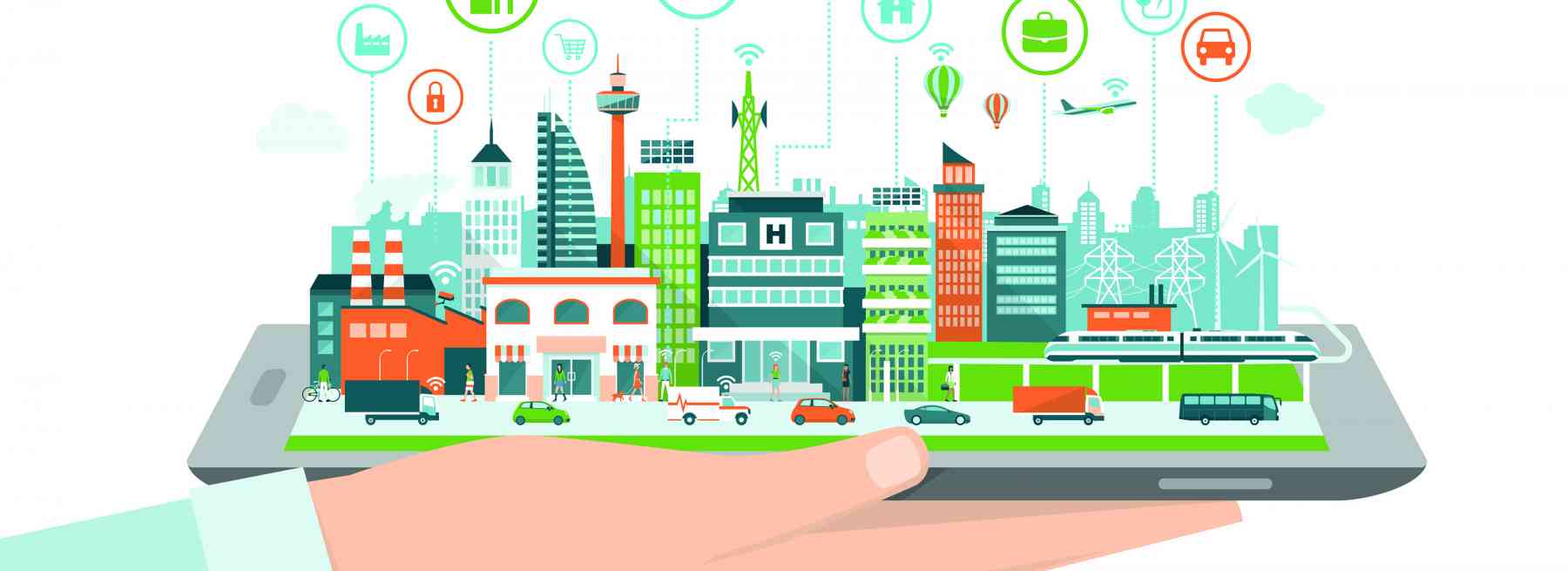Smart Communication Technologies
Jenn Gvozdek
December 15, 2017
Smart Communication Technologies: Building a Higher Quality of Life
According to the United Nations, it is estimated that by 2050, roughly 66% of the world’s population will live in cities. Today national and local governments are already feeling the strain of urban growth with limited resources, and aging or outdated communications infrastructures. How will they handle this urban growth in the future? To adapt, cities have become Smart. They are leveraging smart technologies and the Internet of Things (IoT) to optimize limited resources and provide a higher quality of life through urban informatics designed to reduce traffic, save energy, and improve public safety. Many smart technologies are already being heavily implemented in cities such as Barcelona and Amsterdam. As well, the use of digital communications connected with IoT technologies provides cities an opportunity to communicate important messages and emergency notifications to any screen; including mobile phones, digital signs, interactive kiosks, and video walls
What role does IoT play in Smart Cities?
The Internet of Things is expected to connect more than 26 billion devices by 2020. Smart Cities will utilize this communications infrastructure to connect sensors and devices to optimize limited resources, meet the demands of growth and tackle city inefficiencies. Additionally, by replacing static signs with a network of digital screens and interactive kiosks, governments can further streamline operations and reduce operating costs now and in the future. Using devices such as digital signs, mobile phones, interactive wayfinding stations, and self-service kiosks, helps keep visitors informed in real-time of relevant information.
Communication technology tools connected through the IoT, allow for various pieces of data to be analyzed in a central hub. Every device in a Smart City will be fluidly interconnected with the surrounding environment in order to communicate and receive key information. This allows for smart responses and faster adaptation to change. Data from a variety of sources such as calendars, weather and news feeds, external transportation schedules, and emergency notifications, can also be integrated into the digital communications to ensure the right information is provided at the right time.
Smart Cities in action
As smart devices and sensors learn and track behavior, they can predict and optimize trends and patterns to control energy and other resources. Sensors and devices will also allow diverse control strategies and optimization throughout the city in areas like transportation, waste services, and water/utilities. Barcelona has designed a new bus network based on the data analysis of the most common traffic flows. They are using digital communication technologies to display real-time information, alleviating perceived wait times and enhancing travel experience. Additionally, they have optimized the travel routes of emergency vehicles by calculating the fastest routes and setting all the lights to green as the vehicle approaches through a mix of GPS and traffic management software. This has drastically reduced response times for emergency services all through the use of integrated communication channels. A range of channels can constantly transfer information to indicate various actions—from displaying travel updates to engaging passengers with news, weather, and emergency broadcasts.
Smart Cities are pioneering a new approach to governing and running a city, based on real-time data. Digital communications enable cities to use the data they have collected to streamline operations and improve the quality of life for the residents. The Omnivex platforms enable organizations to easily collect, process, and deliver targeted information across any screen, allowing organizations to enhance their two most valuable assets: people and data.

MARKETING MANAGER
Jennifer is Marketing Manager at Omnivex Corporation. She joined Omnivex in 2011 and is responsible for all aspects of marketing including strategy, communications, and execution. Jennifer has helped Omnivex redefine what digital signage is and how it can help organizations enhance and extend their two most valuable assets – people and data.
Jennifer brings 20 years of software industry marketing experience. She has held numerous marketing positions at software companies including PeopleSoft, Longview Solutions, and Microsoft. Prior to joining Omnivex, Jennifer was the Industry Marketing Manager for Microsoft Dynamics in Canada.



